1 mole N2(g) undergoes followingcyclic process : Which option(s) is/are correct ? [Use: R=2Cal/K−mole, ln 2=0.7]
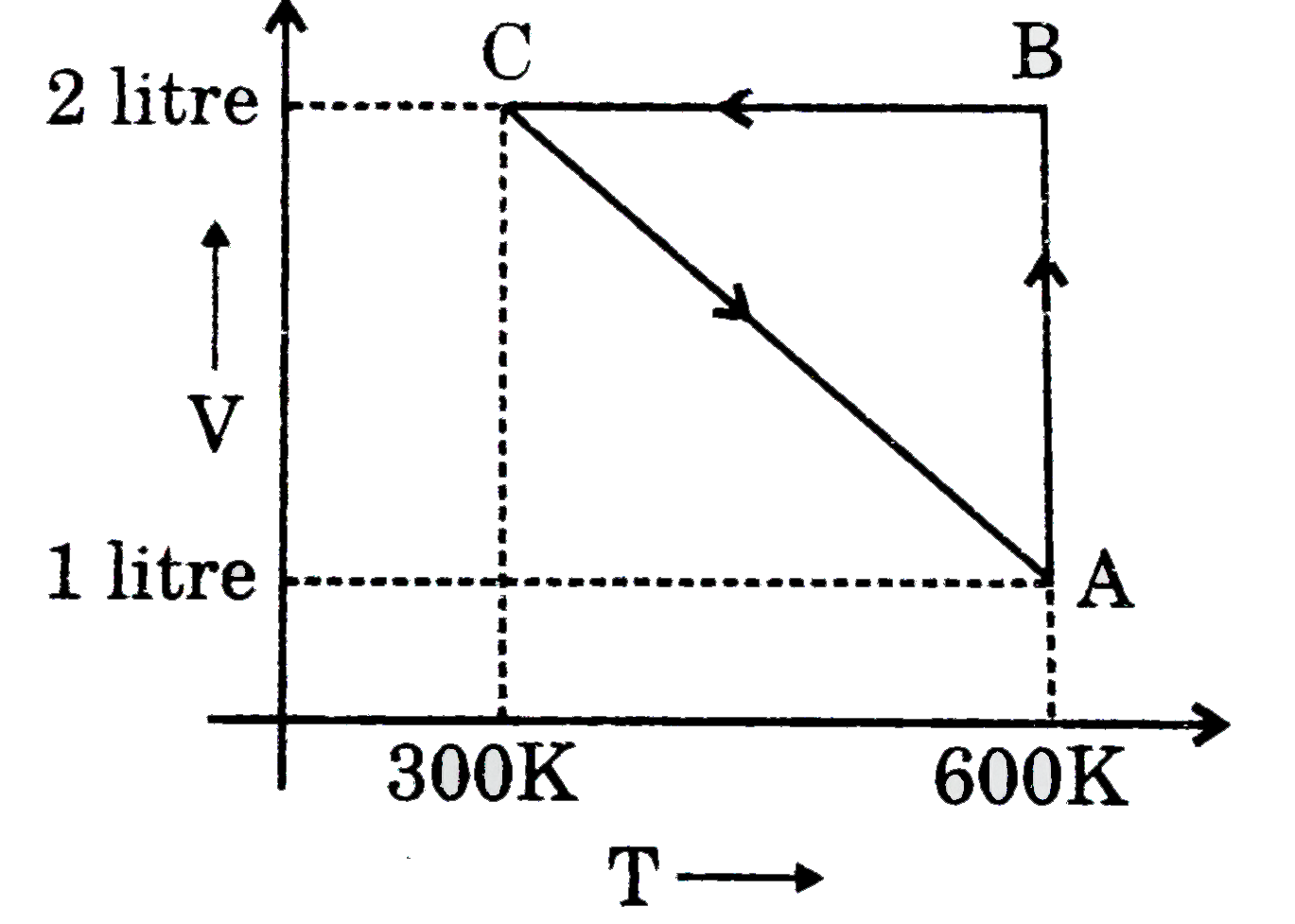
Woverall=−180cal
ΔHAB=300cal
ΔUCA=1500cal
qBC=−600cal
The correct Answer is:A, C
Topper's Solved these Questions
- GRAPHICAL INTERPRETATIONBOOK - GRB PUBLICATIONCHAPTER - GRAPHICAL INTERPRETATIONEXERCISE - Comprehension 1
1 Video
- GRAPHICAL INTERPRETATIONBOOK - GRB PUBLICATIONCHAPTER - GRAPHICAL INTERPRETATIONEXERCISE - Comprehension
49 Videos
- GRAPHICAL INTERPRETATIONBOOK - GRB PUBLICATIONCHAPTER - GRAPHICAL INTERPRETATIONEXERCISE - Electrochemistry
9 Videos
- F-BLOCK ELEMENTSBOOK - GRB PUBLICATIONCHAPTER - F-BLOCK ELEMENTSEXERCISE - Subjective type
7 Videos
- HYDROCARBON (ALIPHATIC)BOOK - GRB PUBLICATIONCHAPTER - HYDROCARBON (ALIPHATIC)EXERCISE - Previous years jee questions
28 Videos
Similar Questions
One mole of an ideal monoatomic gas undergoes the following cyclic process. Calculate the magnitude of work (in cal) in a cycle. (Use: ln 2 = 0.7)
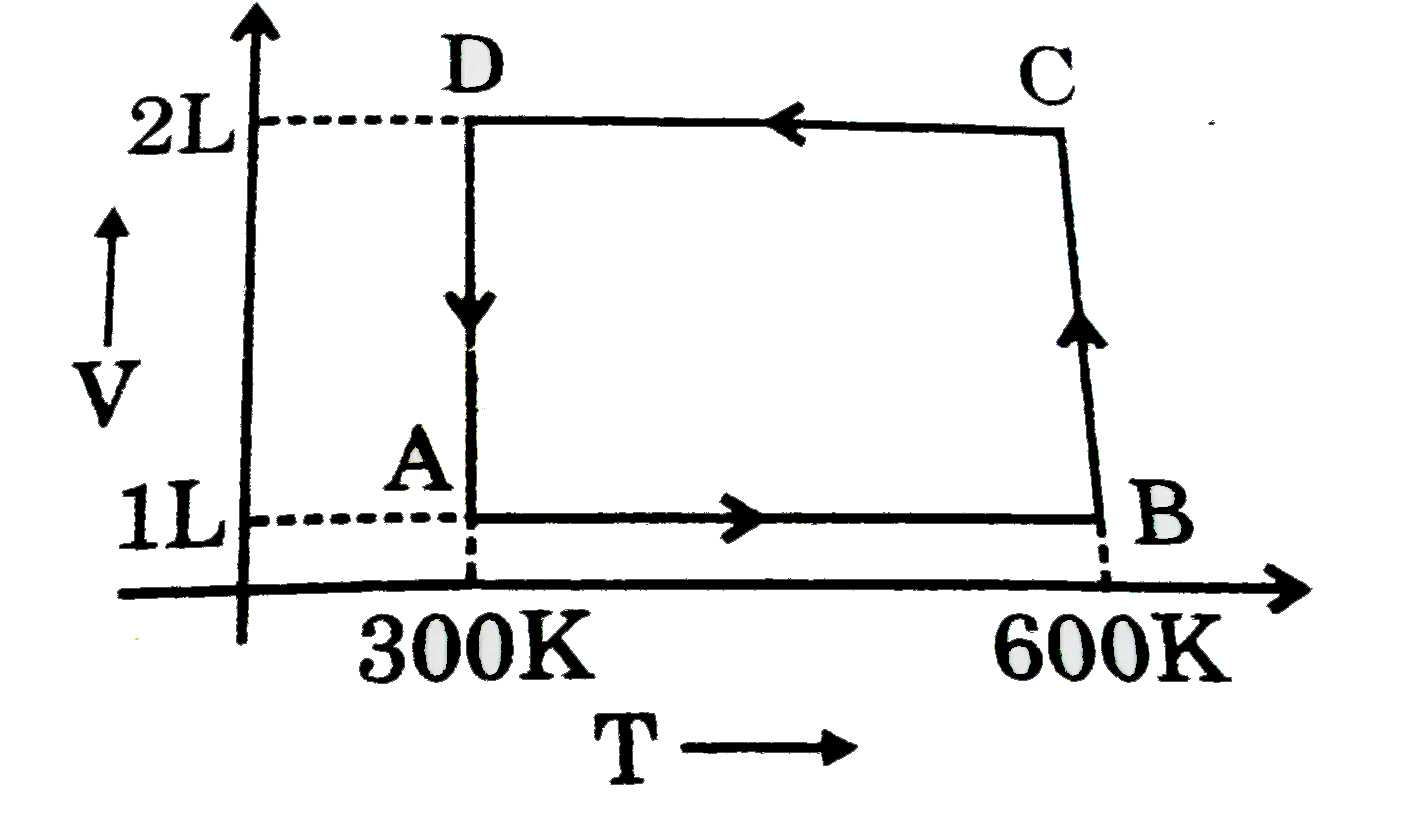
View SolutionThree moles of an ideal gas undergo a cyclic process shown in figure. The work done by the gas during the process is [Take ln (2)=0.693]
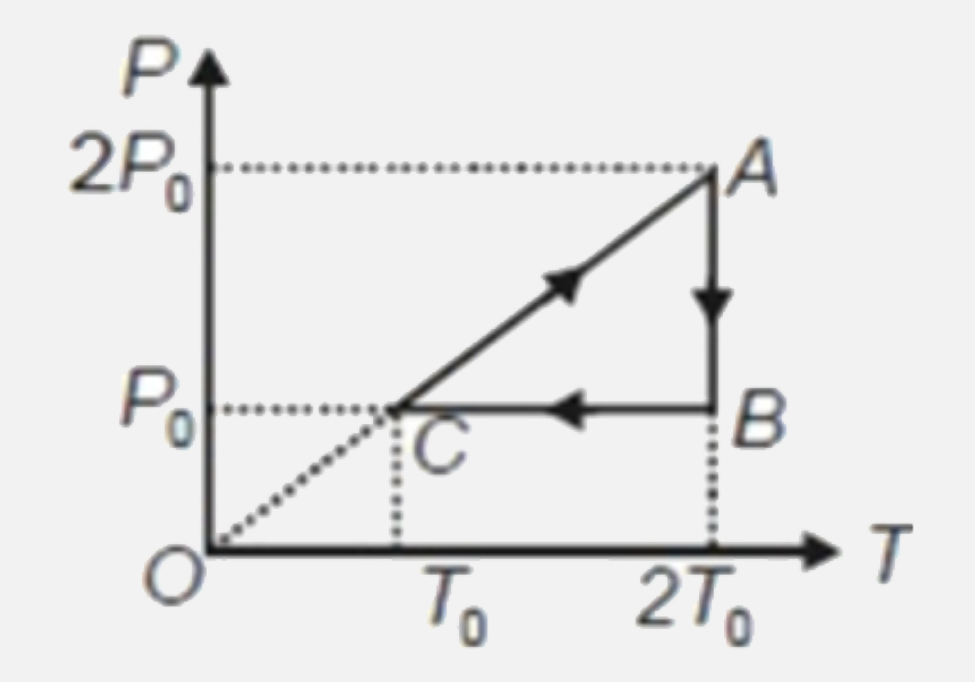
View Solution
Knowledge Check
What is the net work done (in calories) by 1 mole of monatomic ideal gas in a process described by
1, 2,3, 4 in given V-T graph .

Use : R=2cal/mole K
ln2=0.7A−600calB−660calC+660calD+600calCalculate magnitude of work done in calorie for one mole of an ideal gas subjected to the process as shown in figure. [Use: R=2cal/mol−K and ln 2=0.7]
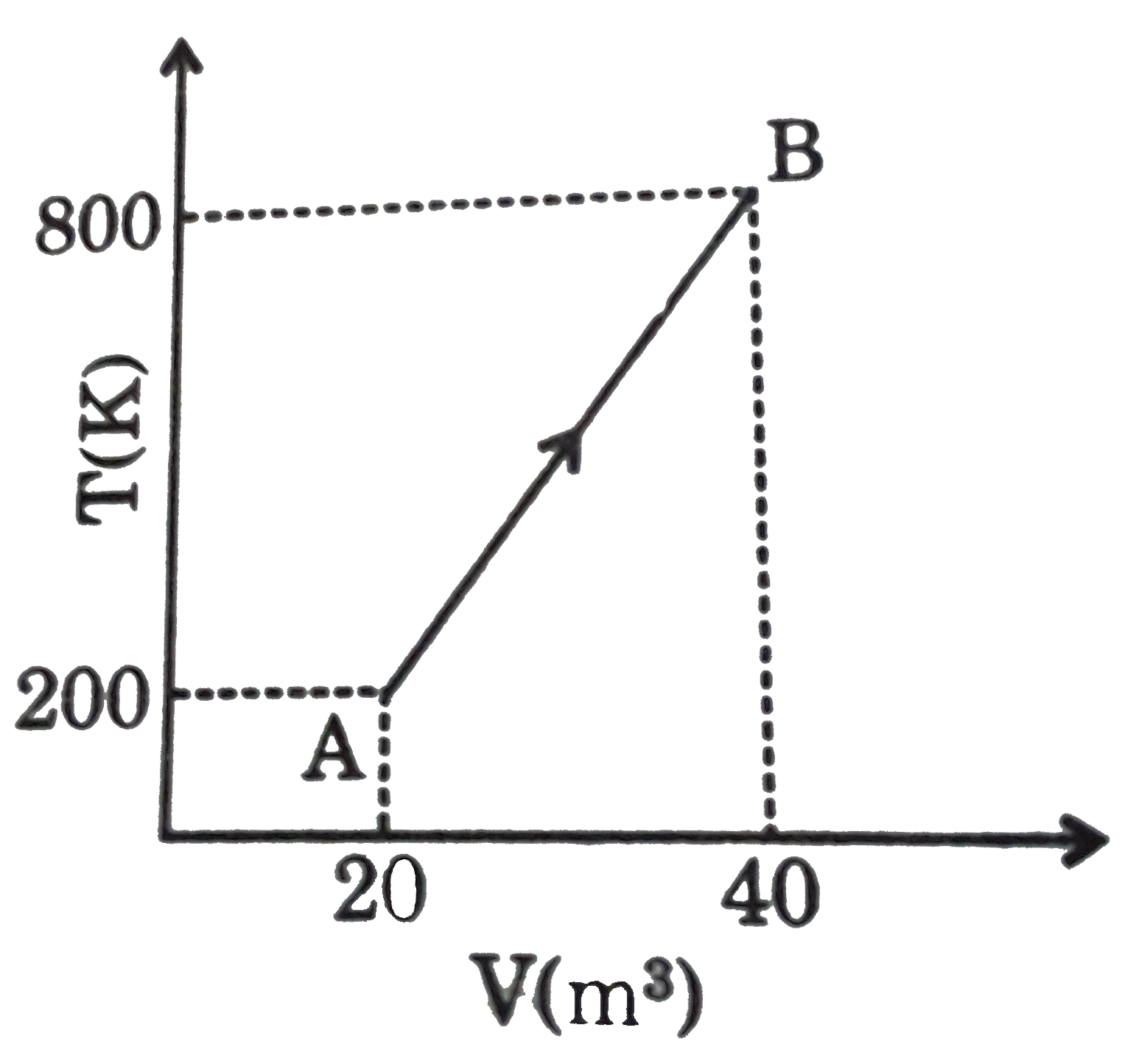 A640 calB600 calC40 calD200 cal
A640 calB600 calC40 calD200 calOne mole of an ideal diatomic gas (Cv=5calK−1mole−1) chagre its state from state 1 (27∘C1L) to state 2 (127∘C,10L) . For this process, which of the following is (are) correct? (Given:R=2calK−1mole−1)
AΔH=700calBΔU=500calCΔS=5ln(43)+2ln10calK−1DΔG of the process can't be calculated using given information.
Calculate magnitude of net work in following cyclic process for 1 mole of an ideal monoatomic gas (in cal).
(Given: B→C isothermal process: D→A adiabatic process : TA=300K,TD=75,TD=75K,R=2cal/mole−K:ln2=0.7)
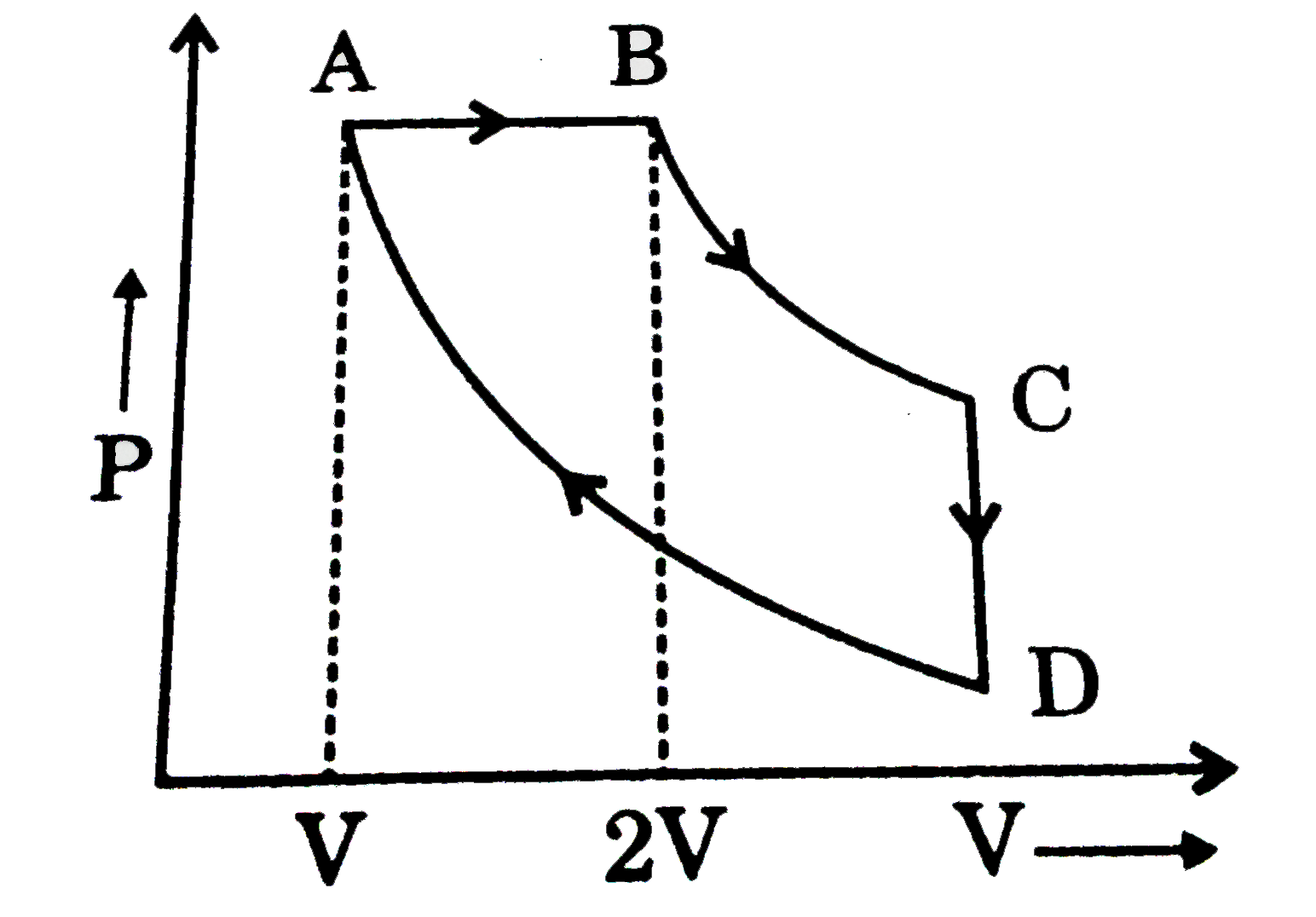
View SolutionOne mole of an ideal monoatomic gas at 27∘C undergoes the process in which TαV3. Then calculate the heat absorbed (in calories) when gas doubles it's volume (R=2cal//mol−K)
View Solution2 moles of an ideal monoatomic gas undergoes a cyclic process ABCA as shown in the figure. R is the univers l gas constant. (given ln 2=0.693) Answer the following questions
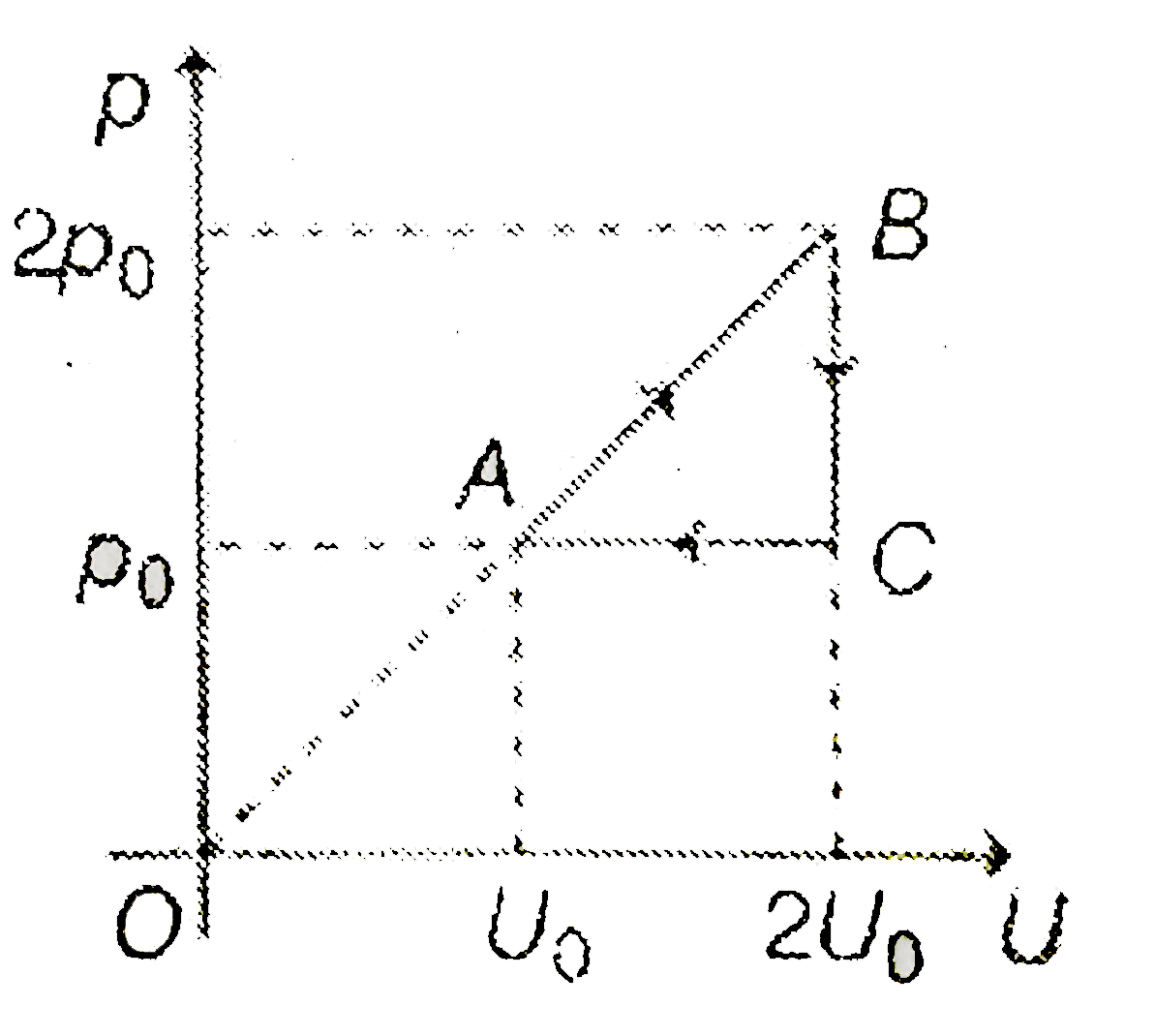
Percentage efficiency of the cycle is (approximately)
View SolutionCalulate the work done (in cal.). When 1.0 mole of N2H4 decomposes completely against a pressure of 1.0 atm at 27∘C (GivenR=2cal/mol/K)
N2H4(l)→NH3(g)+N2(g)
View SolutionFor a liquid, normal boiling point is −173∘C . Then at 2 atm pressure , it's boiling point should be nearly .
(Δvap=200 cal/mole, R = 2 cal/mol-K , In 2 = 0.7 )
View Solution
